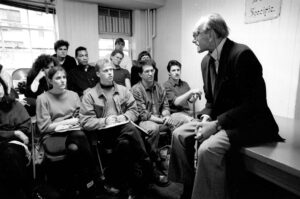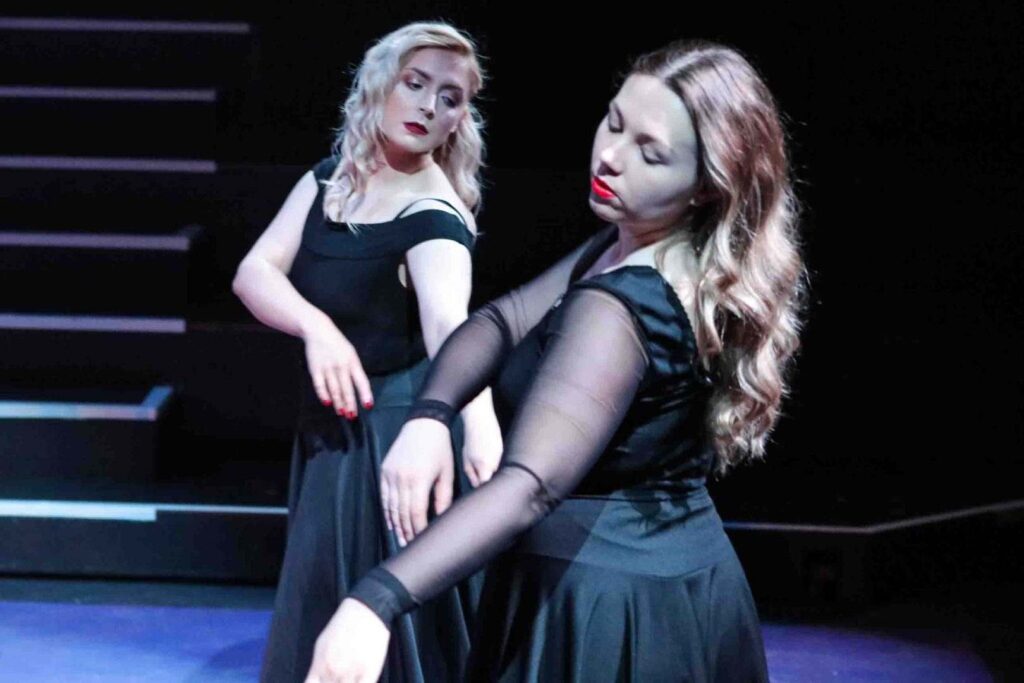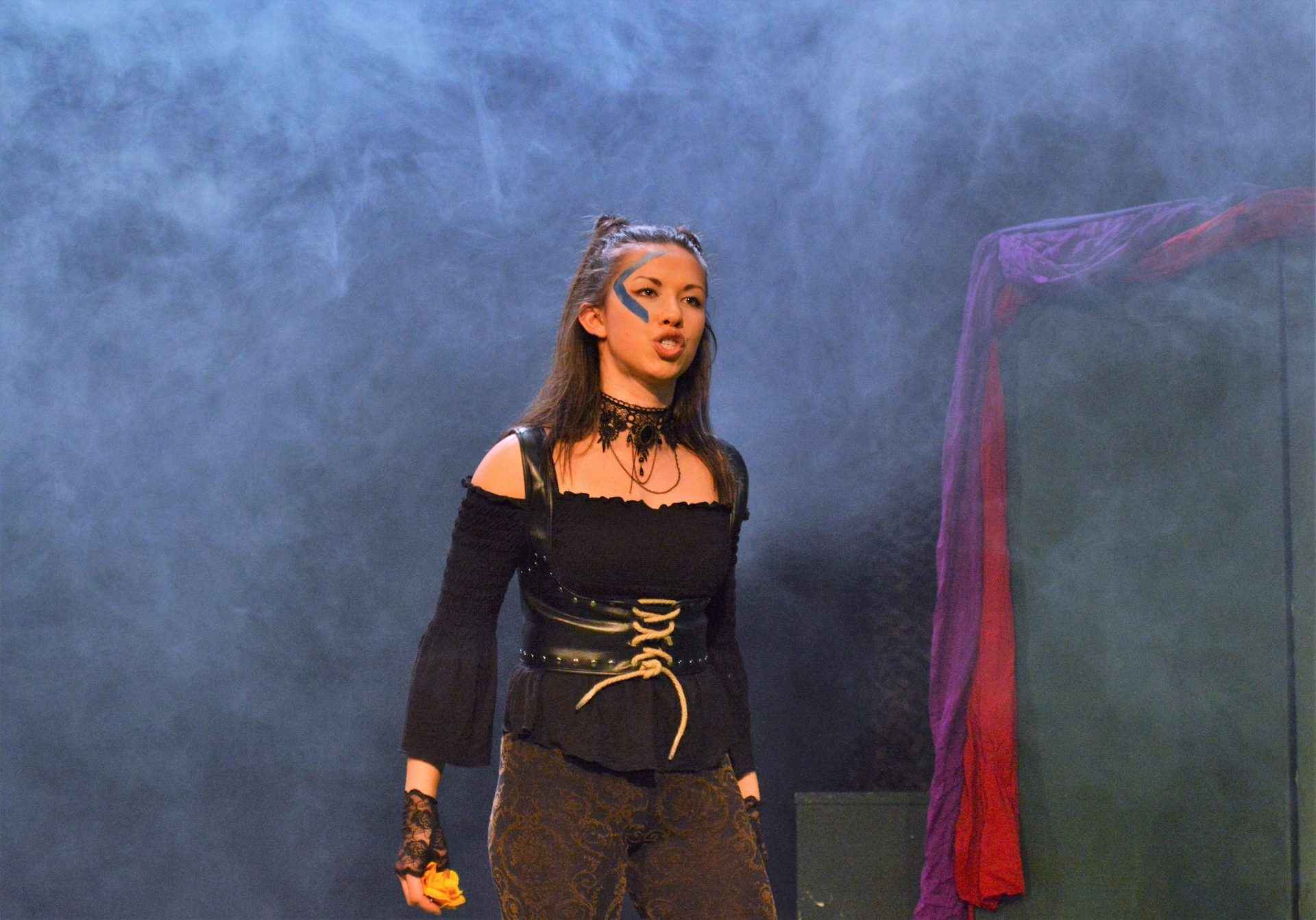

Useful Links
Contact
- The Bridge at Cecil Sharp House
- 2 Regent’s Park Rd, London NW1 7AY
- 020 7424 0860
- admin@thebridge-ttc.org
Social Media


An acting method or acting technique is a system that an actor can employ to create a character. The roles you play as an actor can be incredibly varied and ambiguous so, when taking on a new role, it helps to have a number of ways that you can approach it.
There are many different methods employed by actors. While none are necessarily “better” than the other, they each have their own merit and purpose. Here are some of the most common acting methods that actors should be aware of:
With its origins in Shakespearean acting techniques, classical acting is often referred to as Shakespearean acting. In-depth text analysis is required to better understand the characters as well as the language if it’s an older play. Classical acting often features amplified gestures as was common in traditional theatre performances.
Every actor should be aware of the work of Konstantin Stanislavski, Cofounder of The Moscow Art Theatre. He is often credited with modernising acting by emphasising realistic human behaviour. His idea of the ‘Magic if’ emphasises that actors should imagine they’re in the character’s circumstances and experiencing their feelings. He encouraged actors to ask questions about the character they’re playing. What is their background or motivation and what emotions are they experiencing? Students of Stanislavski would later develop his ideas and ‘system’ further and create their own acting methods.
Also known as the Lee Strasberg technique after its inventor, method acting is heavily inspired by the Stanislavski method where the actor imagines what it’s like to have the character’s life. Method acting takes this further though by being more literal than empathetic by fully embracing the character’s mindset both onstage and offstage to get a better sense of what it’s like to be them.
This acting method was developed by Sandford Meisner who was a colleague of Lee Strasberg. This Meisner technique encourages you to forget your own predispositions and memories and run on pure instinct and emotion. Learning this technique incorporates a lot of improvisation exercises. Imagination and creativity also play key roles.
Another student of Stanislavski, Michael Chekhov developed his own technique that attempts to utilise the subconscious and connect it to physicality. Actors attempt to turn an internal element into a gesture and vice versa repeatedly so that the characterisation becomes more natural and innate.
Adler encouraged an actor to embrace their own individuality and imagination and bring that in their acting and characterisation. Her maxim “don’t be boring” ensured that the actors she taught always found a way to make their characters more interesting and three dimensional. It was their duty to elevate their characters and not just rely on the writer or director to provide everything for them.
The cornerstone of Hagen’s technique is realism in that an actor’s performance should come from a real place based on similar personal experiences. The method of substitution means an actor can use emotional memory rather than relying on imagined emotion. This helps you connect with the character more effectively and utilise your own thoughts and emotions when playing them making the performance more natural and believable.
This is a more recent acting method that was created by director and writer, David Mamet, as well as actor, William H Macy. It combines elements of Stanislavski and Meisner as well as the ancient Greek philosophy of Epictetus. Practical Aesthetics uses two pillars of ‘think before you act’ and ‘act before you think’. This is broken down further with four steps to increase immersion in the character’s world for more realism:
This acting method maintains a separation between actor and character – the actor creates an illusion of a character rather than becoming the character.
Viola Spolin is known as the mother of improvisational theatre and made heavy use of theatre games to boost actors’ creativity and presence in the moment. The idea would be that they would embrace their freedom of expression and be more inventive when performing live. She also encouraged the actors to engage with the audience which meant that no two shows were alike.
Bertolt Brecht’s concept of ‘epic theatre’ meant that an actor should be attempting to narrate a character rather than impersonate them. He also encouraged actors to break the fourth wall. Brecht opposed the idea of escapism in theatre and used the medium as a way of reflecting the real world and contemporary political issues.
LMA is mostly associated with dance and choreography but it also has useful aspects for acting. Movement is an important skill for actors to develop and LMA provides a framework for how to communicate more effectively using the body. Rudolf Laban is known as a pioneer of expressionist dance and his 1950 book, The Mastery of Movement, forms the basis of Laban Movement Analysis. It divides human movements into groups and helps the performer to be more mindful about their movement and the emotions they’re expressing physically.
One acting method isn’t necessarily better than another. Each have their own merits and may be more suitable for a certain character or setting. Every actor is different and may favour a certain method over others depending on their approach to acting. Often it’s best to combine elements of multiple acting techniques and see what works best for the situation.
In order to put acting methods into practice effectively and efficiently, an actor needs to hone a variety of drama techniques to convey what they need to. These techniques include voice, movement, improvisation, and spatial awareness. These are fundamental skills for any actor and, when combined with proper use of acting methods, will improve your characterisation and performance.

This is an actor’s main tool for communicating but there’s a lot more to it than just speaking lines. Your voice needs to be trained properly otherwise it could fall short or sound forced. If we strain too hard for an effect the audience will know we’re not being truthful. You need to take elements like range, pitch, and tone into account as well as projection and volume. Practising pronunciation and enunciation will help ensure that the audience can hear and understand you. Many beginners will also try to rush through their lines rather than making proper use of pacing and pauses. On top of all this you may need to utilise an accent that isn’t your own and still make it sound natural and believable.
The principles of good voice work apply in every acting setting whether it be filming in a studio, recording in a vocal booth for voiceovers, or performing on a grand theatre stage where your voice has to reach distant audience members at the very back. There are a myriad of exercises and methods to help train your voice and reach the required standard expected of a professional actor.
An actor’s physicality is equally as important as their voice. It provides an extra dimension to their character that can’t be conveyed in words. This can be as simple as how they walk or stand, or how they physically react to other characters through facial expressions or eye contact (or lack thereof).
In real life, a person’s body language can reflect their emotional state and actors can tap into this by using their face or body in certain ways. The audience will typically be able to tell when a character is feeling a certain emotion before they’ve even said anything based on how they are expressing themselves physically. There can be subtle nuances too such as the speed and direction in which they move somewhere or the path they take from A to B which may indicate more than we’re consciously aware of.
Budding actors are often taught with observation exercises where they study real people out in public. How do those people interact with others? How do they hold themselves when waiting in a queue? How do they navigate a crowd when walking? Are they in their own world and preoccupied or are they extra aware of their surroundings? Do they appear cheerful and carefree? Or maybe they’re stressed, tired, or frustrated? Are they socially awkward or nervous? You can learn a lot by mindfully observing basic human behaviour and apply these physicalities to your own performances.
Improvisation requires creativity and imagination – not just for coming up with lines off the cuff when appropriate, but also creating new physicality and internalisations. Early in the production stage of a play, show, or film there will be opportunities for the actor to improvise ideas to help the creative process of the production. The director may not yet have a complete picture of how the end result will appear so will rely on actors to offer creative ideas of how to play their part. Good actors will always have the ability to improvise or be creative.
Mistakes happen when performing live so some quick-thinking improvisation can hide errors and stop the flow from being interrupted. If you’re truly inhabiting your character then this will come more naturally. When studying acting, improvisation is usually taught in groups. This helps train you to come out of your comfort zone and let go of inhibitions. Over time you’ll be able to come up with improvised lines that are more believable and suited to the situation.
It is crucial for an actor to be aware of their surroundings so they can use the space properly. Their space might consist of a limited stage, other actors, props and scenery, and fixed positions of camera shots and lighting. Even a momentary lapse of spatial awareness can quickly ruin a take or performance. You want to hit your marks at the right time every time and a good sense of the space around you is essential. You’ll feel more in tune with the fictional world you’re in and your performance will appear more natural.
Practising a wide variety of acting methods and drama techniques will help you develop your own acting style and achieve good characterisation and performance. Many actors stress about which acting method to focus on and often overthink this.
What acting methods you use will often be determined by the kind of character you’re playing. It’s important to be objective and realistic about your expectations from acting and the kind of roles you’re going to get. Be mindful of where your strengths lie. The more experience you get as an actor the more you’ll understand your own acting type and may see a pattern in the kind of roles you get cast in.
You’ll often see actors playing similar characters over multiple films which works well for a lot of people. If you’re more interested in developing your range as an actor then try auditioning for a variety of genres and for roles outside your comfort zone. Try things out and see what works for you.
Looking to find out more and put some of these acting techniques into practice? The Bridge Theatre Training Company in London provides professional acting training to help you develop your acting skills and techniques.
Also click here to read an in-depth answer to the question, what is acting?
